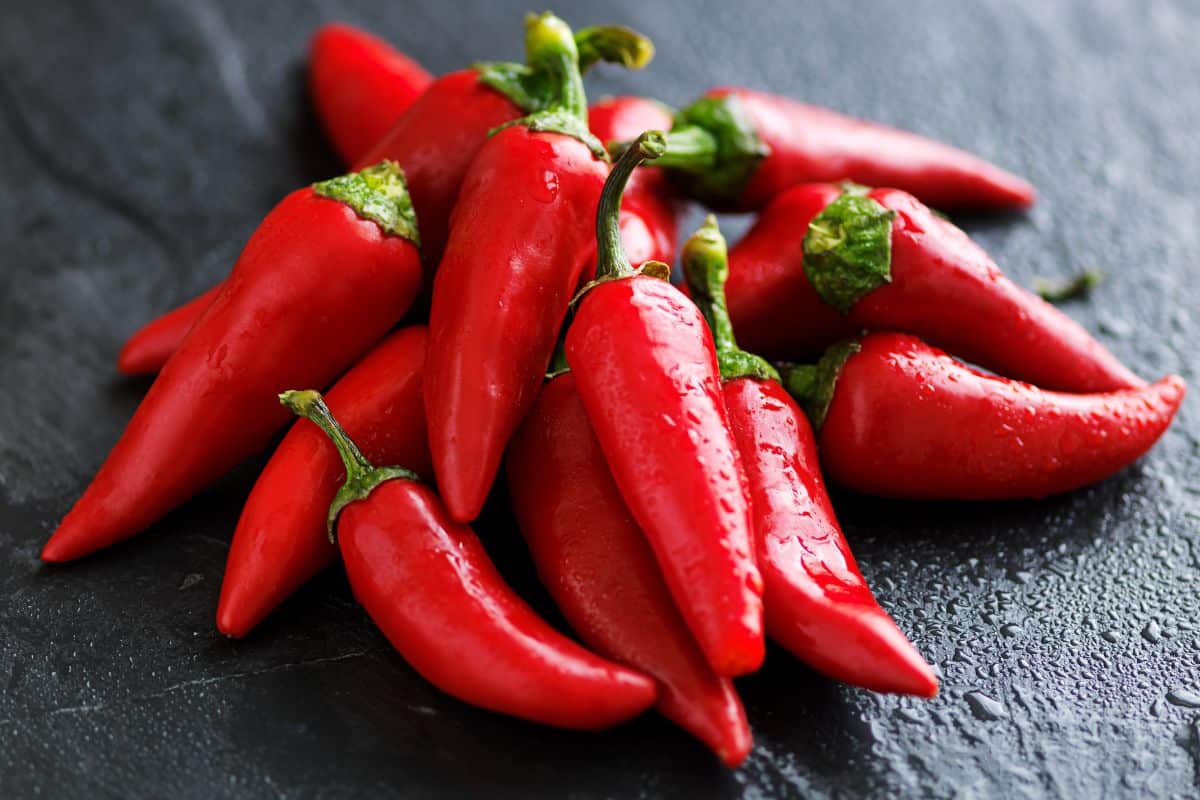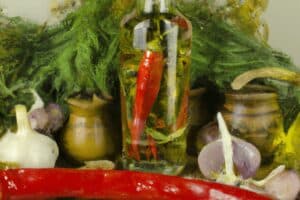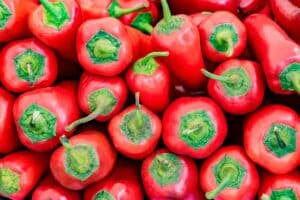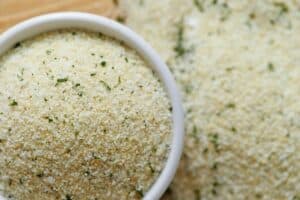In Mexican and other cuisines, the capsicum, or pepper, is a large ingredient that will often appear in recipes and dishes. When you lack a specific pepper, you may find that the flavor or textural outcome of a recipe is a little different.

When you understand the features of each pepper and what they uniquely bring to a dish, you can substitute them a lot better. By finding better and new ingredients, we can also expand our knowledge of peppers and ingredients in general.
We’re here to the hard part for you and have found plenty of substitutions for the Fresno pepper, as well as an explanation of what the pepper is so that you can understand which substitution works well for you in a specific recipe or situation.
Keep reading to learn more about the Fresno pepper, as well as what other peppers are similar, and why.
What Is A Fresno Pepper?
Put simply, a Fresno pepper is a variety of capsicum, or in botanical terms it is a cultivar of the genus Capsicum, which is how we botanically refer to peppers.
It’s important to get the botany straight as, fundamentally, it is the genetics of each variety of pepper that make them unique, but the genus of capsicums that keep them similar. This cultivar is called Capsicum annum.
The Fresno chile was genetically developed by Clarence Brown Hamlin, a prominent American horticulturist, who released it for commercial cultivation in 1952.
As you can imagine, they are named after the city of Fresno in California, which was popular at the time.
In many ways, the paper became popular, in comparison to the jalapeño, as it was mild in spice so generally preferred by the American audience it was catering to those who didn’t have the spice tolerance of Mexicans.
It is often compared to a jalapeño and is quite similar in terms of size and shape, but has a much milder heat and is more red when harvested. It also grows genetically distinct to a jalapeño, growing point up rather than point down.
The Fresno pepper starts out bright green like a jalapeño, but changes from orange to red when fully matured. They are conical, around 2 inches long. They grow well in hot and dry climates, like Fresno, but suffer particularly badly from cold and disease.
As a result you may not find these commonly in Europe, while i the US they are very common
As the Fresno pepper has quite thick walls, they aren’t ideal for being dried like other peppers, and commonly aren’t used in dried chile powders.
As a result, they make their way into recipes as a fresh pepper regularly. They are preferred to jalapeños when someone wants something that isn’t as spicy as the latter pepper.
You might see Fresno peppers listed for ceviche, salsa, and many other dishes that ask for fresh peppers.
Best Substitutes For Fresno Pepper
1. Fresno Bell Pepper
Important to distinguish between is the Fresno Bell Pepper and the Fresno Chile Pepper. We are talking about the former today, the smaller chile style Fresno, but there is a bell pepper which was modified from the same genes.
As a result, the Fresno Bell Pepper can be really comparative to its Chile counterpart.
Most chiles and bell peppers are quite different, the latter often being spicier. But for our purposes it doesn’t matter too much as a Fresno chile pepper is not really that spicy, so it’s bell pepper counterpart can also be a great substitute.
Basically any red bell pepper can be used in place of a Fresno chile as you won’t be losing out on much heat.
2. Jalapeno
As we mentioned, a jalapeño is very similar to a Fresno chile pepper in its morphology, how it looks, but they are quite different in other ways. A jalapeño is green, for example, when Fresno peppers are commonly harvested when they are red.
Beyond this mild color difference, a jalapeño is quite a bit spicier than a Fresno. If spice doesn’t bother you too much, a Jalapeño can be good to use and has similar flavor and textures.
If you want a clean pepper flavor, rather than spice, there can be better options, but when making something like a salsa, a jalapeño can be a good option.
3. Aleppo Pepper
The Aleppo pepper, like Fresno, is named after a city, Aleppo is a city in Syria where the pepper originates from. Like Fresnos, the Aleppo pepper isn’t really that spicy, but has a fruity pepper taste like the former.
One difference in taste is that an Aleppo pepper can often have a smoky flavor that Fresno doesn’t, that said this works pretty well in the dishes that Fresno is used in.
If you were to chargrill a Fresno, it would taste quite similar to an Aleppo thanks to the smokiness from the charring.
Aleppo peppers, if you can’t find them fresh, can often be found in a flaked form, this is due to them not being so spicy, so their flakes can bring a lot of flavor and seasoning to the dish instead of just spiciness, like a Fresno would.
4. Anaheim Pepper
California has a very similar climate to Mexico in many ways, being pretty close together geographically, so chiles can grow as abundantly in California as they do in Mexico.
This explains why there are many peppers that have been grown specifically in California and pay homage to that, such as the Fresno but also the Anaheim.
In a horticultural sense, they have to be pretty similar in order to grow in the climate of California. Like a Fresno, the Anaheim pepper isn’t really that spicy but has that sweet, vegetal, flavor that is akin to the Fresno.
The Anaheim is a little different in morphology, while the Fresno is the size of a Jalapeño and red, an Anaheim is a medium-sized pepper, around double the length when mature, and is also green in most cases.
As a result Anaheim peppers are particularly good for stuffing for something like Chile rellenos, but can also be cut up and used fresh in a salsa or something similar.
5. Serrano Pepper
A Serrano pepper is a type of pepper that predates the Fresno pepper by a long time. They are a type of chile that have been grown in Mexico for a very long time. As a result of being grown in Mexico, they tend to be much spicier, around the same as a jalapeño.
The Serrano can be red or green, but are quite similar to Fresnos when they are red. They also look quite similar, if a little thinner than your classic Fresno, but have a similar pepper flavor with added spice. They are commonly used in salsas and pico de gallo.
6. Jarred Pickled Peppers
The range of pickled peppers out there in your grocery store will be wide. Pickled peppers can also use any kind of spices or seasoning that can relate differently to certain cultures.
Even Fresno peppers themselves are commonly used for pickling because of their wide walls. Wherever you can find pickled Fresno peppers or not, the act of pickling can detract from the pepper’s unique flavor, whatever variety of pepper that may be.
This said, pickled peppers are a great alternative to fresh peppers, and Fresno peppers. They will be a little smaller and not technically fresh, but can bring unique flavor to a dish or salsa thanks to their pickled nature.
In any grocery store they will have some kind of pickled peppers and when you are in a pinch they work well in any dish where a pepper is required, and are good to keep in your pantry for when you do run out of peppers.
7. Big Jim Pepper
If you are a resident of New Mexico you won’t be a stranger to the pepper, this state being a great place for chile’s to grow, right next to Mexico.
One pepper commonly used in the state’s cuisine is the Big Jim Pepper, another cultivar of the Capsicum annum. It holds the Guinness Book of World Records as the largest chile pepper in the world, with some peppers reaching 14 inches in length.
As a result of its morphological features, it is quite different to other peppers in what it looks like, but this also affects the heat greatly. The Big Jim pepper is commonly quite sweet and particularly mild in spice.
This makes it quite similar to the Fresno pepper when we don’t compare looks. The Big Jim Pepper is another one that is great for stuffing, but can have some similar flavors to the Fresno pepper.
In most cases, the Big Jim Pepper is harvested when green, which is different to the red Fresno.
8. Chimayo Chile
Chimayo is another Capsicum annum grown in New Mexico and specifically the town of Chimayo where it gets its name, where roughly 500 acres of these peppers are harvested per year.
They have a potentially unique flavor, often described as sweet and smoky, but have a similar spice level to your Fresno chile. They are a little longer and wider than your generic Fresno, but often turn a deep red.
They are commonly dried and can differ from Fresnos this way, but due to their low spice levels they are quite similar.
The peppers are particularly prized within the pepper community, though, often relying on the specific climate of Chimayo to dictate its uniqueness.
As a result, powdered Chimayo chile peppers can go for quite a bit of money. This siad, if you can find them in your grocery store, they are quite similar to Fresnos and are used in similar ways.
9. Hatch Or New Mexico Chile
The Hatch or New Mexico chile is really popular in the New Mexico area and is a chile pepper that is pretty similar to the Fresno. Hatch is an area of New Mexico that marks an end to the Rio Grande Valley.
Sometimes these chile peppers are distributed as ‘Hatch’ while others are merely ‘New Mexican’ this is to do with a unique law protecting New Mexican growers, chiles of the same genetics that are grown not in the Hatch Valley are recognized simply as New Mexican, but they are invariably quite similar.
In any case, that is actually really similar to Fresnos. They can be quite hot sometimes, albeit this is quite background, the bite and earthiness of them is quite similar to the fresno, and they can be harvested either green or red.
They look a little different to your Fresno, a little longer and wider, but are pretty much the same when it comes to fresh usage.
Final Thoughts
As you can see, North America and Mexico have pretty similar climates in the most part, particularly the more arid biomes like New Mexico and California.
This trifecta of areas is known for their chile and pepper production and as a result there are lots of peppers available across the US.
Many of these peppers are really similar to Fresno peppers. A Fresno pepper is generally quite generic and any pepper that is mild in its spice, but provides a fleshy crunch and earthy pepperiness will be quite similar.
We have generally found that Anaheim and Hatch can be pretty similar to Fresno, and Pickled Peppers can be a worthwhile choice when in a pinch.
Frequently Asked Questions
Generally Fresnos aren’t that hot but are at a medium spice level. This said, they can vary quite a lot, particularly in drier climates. They can range anywhere from 2500 to 10000 scovilles, but the median scoville range is around 6250.
Other chiles like a serrano or a jalapeño will be noticeably hotter than a Fresno, but a Fresno is likely to be more spicy than an anaheim or hatch.







